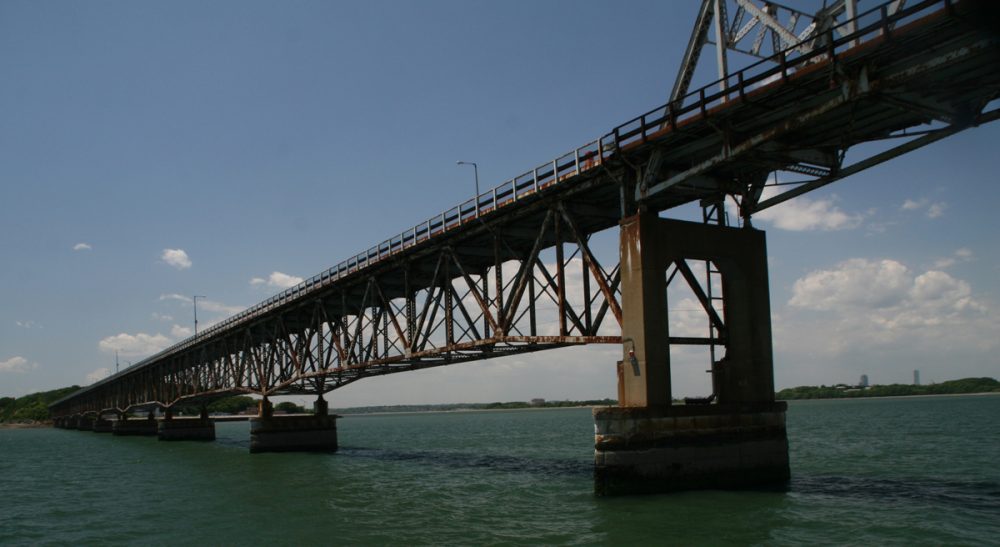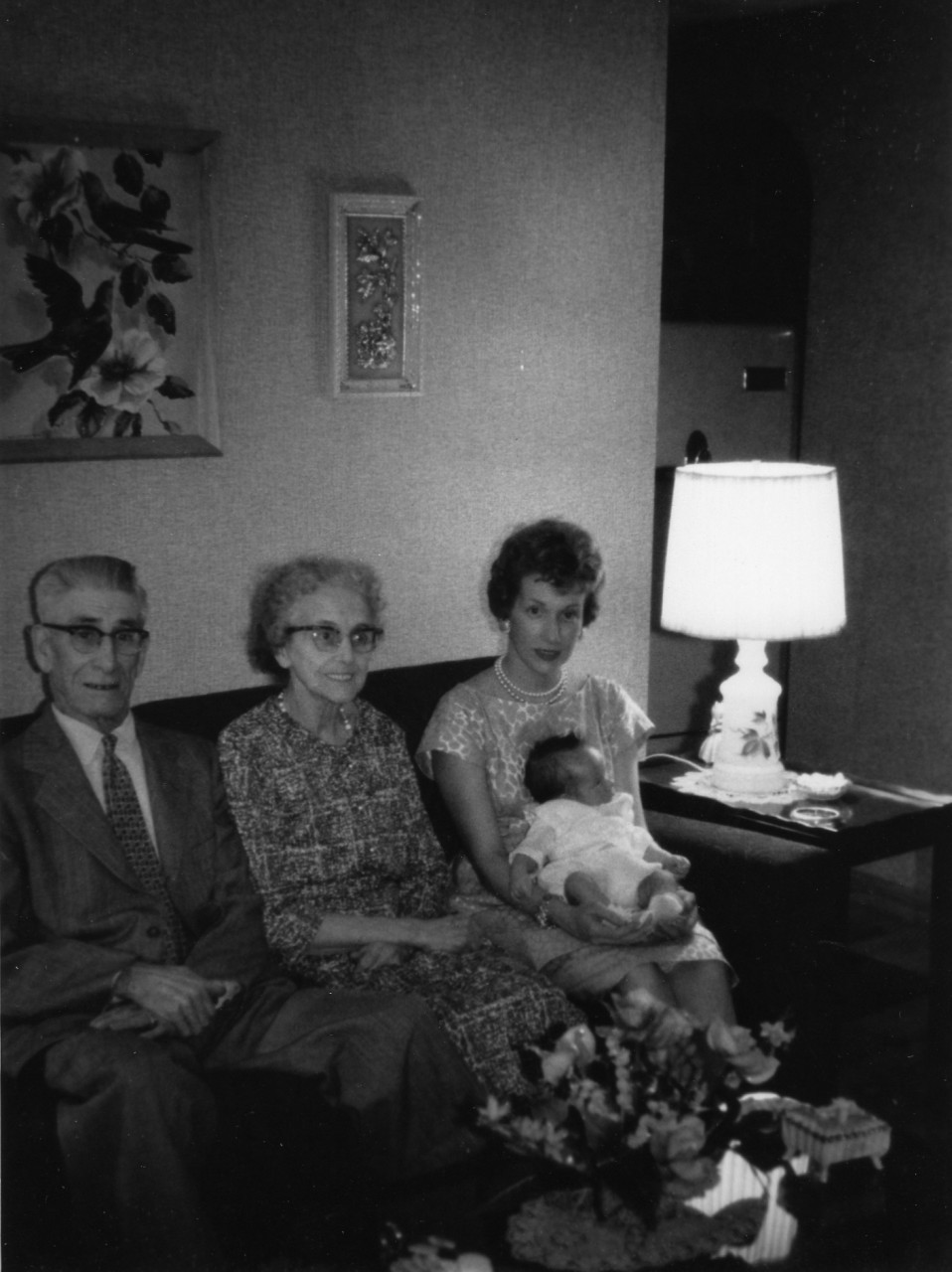Advertisement
Long Island Viaduct, Long Ago
Resume
With the crumbling Long Island Viaduct now closed after 63 years of carrying drivers to and from Squantum to Boston’s Long Island and Quincy’s Moon Island, fond childhood memories of weekly trips across the span have come back to me. Long Island has a long history of serving the people of Boston, with facilities housing the chronically ill, the homeless and, at one time, an almshouse. Two of those served were my grandparents, who died there of old age and its attendant maladies.
Every Sunday afternoon beginning in the early 1960s until 1968, my parents and I made the trip from our home in Brockton to Long Island. Our first stop was South Boston, at the relatively new West Broadway Housing Project, to pick up my mother’s father, Grampy Shanks.
Every Sunday afternoon beginning in the early 1960s until 1968, my parents and I made the trip from our home in Brockton to Long Island. Our first stop was South Boston, at the relatively new West Broadway Housing Project, to pick up my mother’s father, Grampy Shanks. Usually, my Aunt Vivian, my mother’s sister, would be there, as well.
The five of us would pile into my father’s Buick, sans seat belts. I always sat on the front bench seat between my father and grandfather, with my mother and aunt in the back. The smoke from my grandfather’s Marlboros filled the car as we shot down Old Colony Avenue and Morrissey Boulevard to Neponset, then over the Neponset River into Quincy, past the huge Boston Marina and through the salt marsh into Squantum. It was along East Squantum Street that we’d stop at a red brick corner store overlooking Dorchester Bay and pick up a chocolate frappe for my grandmother, Bertha Leora Seely Shanks, who spent the last four years of her life, bedridden, on Long Island at Boston’s Chronic Disease Hospital. We made these Sunday trips to visit her.
I remember everything about those drives, especially the way it smelled along the Moon Island Causeway. This was two decades before the Massachusetts Water Resources Authority was created to protect the state’s waterways. The raw sewage in Boston Harbor made low tide especially pungent.
Occasionally, at the little guard shack at the base of the bridge, my father had to wind down the window to state our business. For me — I was all of 4, 5 or 6 years old at the time — this part of the trip was always the most exciting. So was crossing the narrow, two-lane bridge — the biggest I’d ever seen — with its sweeping views of Thompson and Spectacle islands, and with the Boston skyline to the north and Quincy Bay and Peddocks Island to the south. The bridge had not yet seen two decades of service at the time, but it seemed old and creaky to me even then.

There was a sound our car’s tires made when passing over the open grate at the apex of the bridge. To me, that noise signaled that we were almost there.
Once descended from the bridge, we drove along Long Island Road through a grove of pine trees at the southernmost tip of the island. There is a former army installation and two cemeteries, one for Civil War dead, and the other, the Long Island Hospital Cemetery, for an estimated 3,000 unclaimed souls who came to the island for care and never left.
The highest point of Long Island bears a trademark feature, recognizable to anyone who has looked out the window of an airplane during a final descent into Logan Airport: the red and white checkerboard water tower. We parked in a lot between that tower and the long-ago-abandoned Curley Auditorium. I remember watching my mother, grandfather and aunt disappear down the hill as they walked toward the hospital complex, while my father and I stayed behind. In the 1960s, young children weren’t allowed in to see hospital patients, so my father and I listened to the radio and watched planes swoop over the island into Logan.
We stopped making our weekly trips to Long Island in January 1968, when my grandmother died at 78. Five years later, Grampy Shanks would die there, too, just three days before Christmas, in 1973.
We stopped making our weekly trips to Long Island in January 1968, when my grandmother died at 78. Five years later, Grampy Shanks would die there, too, just three days before Christmas, in 1973. He had been impressed by the compassionate care my grandmother received, and when all those Marlboros finally caught up with him at the age of 84, he asked to be taken there.
I have only traveled across the Long Island Viaduct once since my grandfather died. About 25 years ago, I went out to cover a story at the homeless center, which has been evacuated, along with the rest of the island’s facilities, since the viaduct’s closing.
Boston’s Mayor Marty Walsh has vowed to save the bridge. I hope he does. Not only because of my own memories of the span, but also because the bridge was a metaphor for the connection we on the mainland had with those served by the programs on Long Island: It was shaky. It was tenuous. But at least it was there.
Related:
